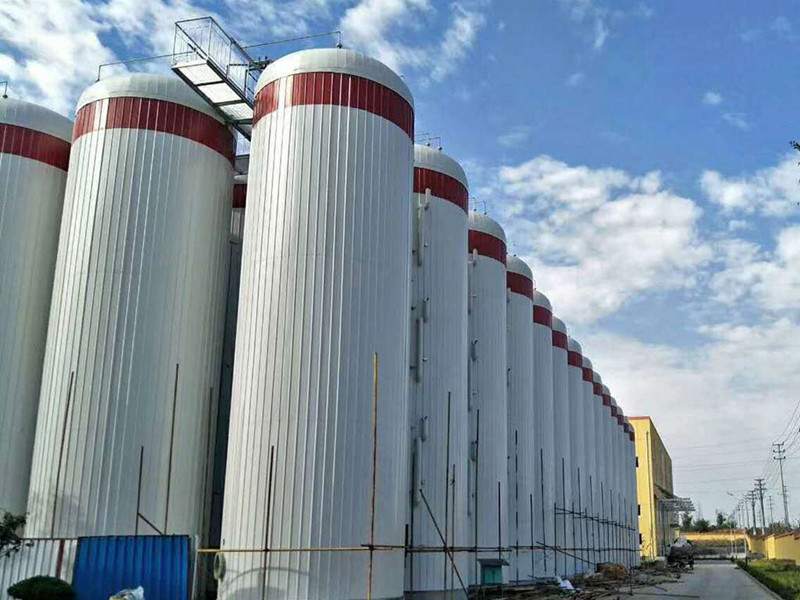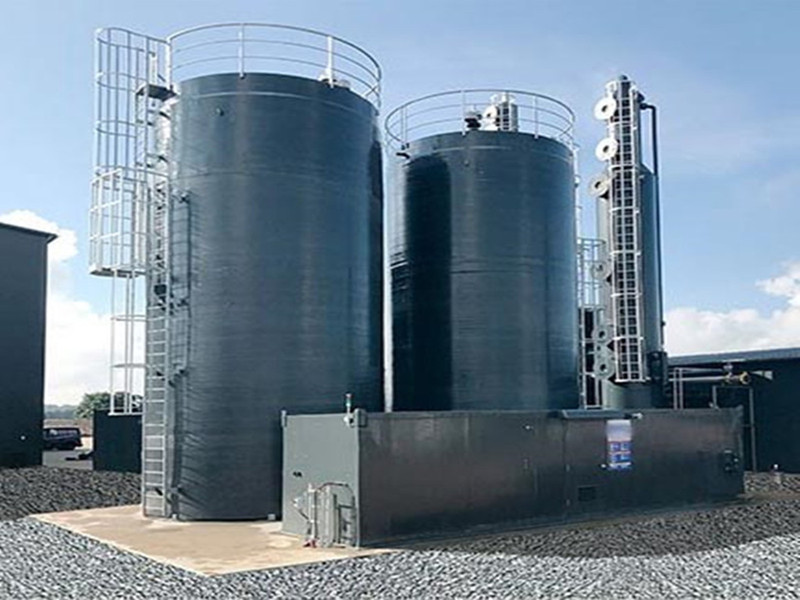Insulation Tanks: Save Energy, Hold Temp, Built to Spec?
Insulation Tanks: the quiet backbone of stable-temperature storage
If you’ve ever chased a stubborn temperature drift in a process line (I have, more than once), you already know why Insulation Tanks matter. In food plants, biotech, even battery precursor lines, thermal consistency isn’t a “nice to have”—it’s throughput, yield, and quality.

What’s different now: market shifts and materials
Two big trends. First, FRP (fiberglass reinforced plastic) has pushed ahead thanks to corrosion resistance and lighter weight compared with coated steel. Second, thermal envelopes are getting smarter: closed-cell PU foams with λ ≈ 0.023–0.030 W/m·K are now paired with UV-stable FRP jackets, meaning less heat loss and fewer maintenance cycles. Many customers say they’re surprised how a properly insulated FRP tank cuts energy draw by 8–15% in real-world use (yes, depends on delta-T and wind loading).
At a glance: core specs
| Product | JRain FRP Insulation Tanks |
| Size Range | DN500–DN25000 mm (custom sizes available) |
| Insulation Materials | PU foam, PIR, mineral wool (as required) |
| Outer Jacket | FRP laminate with UV-stable gelcoat |
| Thermal Conductivity (foam) | ≈0.023–0.030 W/m·K (lab); real-world may vary |
| Temperature Window | -40°C to +120°C typical; higher on request |
| Service Life | 20–30 years with normal maintenance |
| Standards | ASME RTP-1, ASTM D3299/D4097, ASTM C177, EN 13121 |
| Origin | No. 1289, Yingbin South Street, Jizhou District, Hengshui, Hebei, China |
How they’re built (the practical version)
- Materials: corrosion-resistant FRP shell, core insulation (PU/PIR), protective FRP jacket.
- Methods: filament winding or contact molding per ASTM D3299/D4097; foam-in-place or pre-formed panels; gelcoat finish.
- QA and testing: hydrostatic test; thermal soak and infrared survey; Barcol hardness (ASTM D2583); thermal conductivity check (ASTM C177); spark test on liner if specified; dimensional verification.
One test snapshot: a 50 m³ tank with 60 mm PU maintained 4°C brine with ambient 28°C; heat gain measured ≈4.9 W/m²K equivalent loss factor, stable over 8 hours. Not a lab miracle—just good detailing on nozzles and manways.

Applications where Insulation Tanks shine
- Food & beverage: cold brine, fermentation hold, chocolate tempering (tight hysteresis).
- Biotech/pharma: media prep, buffer storage—temperature stability + cleanability.
- Chemicals: corrosive blends needing controlled exotherm damping.
- New energy: electrolyte intermediates; water-glycol thermal loops.
Case 1: A craft brewery swapped steel-plus-cladding for FRP + PU. Reported 12% chiller savings and less sweating around nozzles. Case 2: A coastal chemical site needed salt-air resistance; the FRP jacket and vinyl ester liner held up—zero blistering at 18 months.
Vendor snapshot: who does what
| Vendor | Thermal Performance | Corrosion Resistance | Lead Time | Certs |
|---|---|---|---|---|
| JRain FRP (Insulation Tanks) | PU/PIR optimized; low thermal bridges | High (FRP + gelcoat) | Around 3–8 weeks | ISO 9001; ASME RTP-1 compliant builds |
| Steel tank + cladding | Good, but bridges at nozzles common | Medium; needs coatings | 6–12 weeks | API/ASME steel codes (varies) |
| Generic importer | Varies; limited test data | Uncertain | 8–14 weeks | Mixed/undisclosed |
Customization and integration
Options: double-wall, heat-trace channels, clean-in-place (CIP) spray balls, sanitary nozzles, manways, saddles/skirts, level/pressure ports, pigment-matched gelcoats, and conductivity-safe grounding points. For hazardous areas, clients sometimes request antistatic veils—worth asking about.
What users say
Feedback has been consistently practical: “less icing,” “easier hose-down,” and—my favorite—“we stopped babysitting tank temps.” Honestly, that’s the dream.

Compliance, documentation, and handover
Material certs, QA reports, hydrostatic records, thermal test logs, and weld/laminate maps are typically provided. ISO 9001 quality systems are standard. If you need FAT with IR thermography, say so upfront; it’s becoming common, and it’s worth it.
Final note
If you’re speccing Insulation Tanks, chase the details: nozzle isolation, support saddles, and weather seals. That’s where heat sneaks out—and budgets go.
Authoritative citations
- ASME RTP-1: Reinforced Thermoset Plastic Corrosion-Resistant Equipment, ASME, latest edition. https://www.asme.org
- ASTM D3299 / D4097: Standard Specifications for Filament-Wound and Contact-Molded FRP Tanks, ASTM International. https://www.astm.org
- ASTM C177: Standard Test Method for Steady-State Heat Flux Measurements and Thermal Transmission Properties by Means of the Guarded-Hot-Plate Apparatus, ASTM International.
- EN 13121: GRP tanks and vessels for use above ground, CEN. https://standards.cen.eu
- ISO 9001: Quality Management Systems—Requirements, ISO. https://www.iso.org
Latest news
-
Rectangular Tank Made of Fiberglass Material – Durable, Cost-Effective Liquid Storage SolutionsNewsNov.24,2025
-
Hollow Drill Rods for Efficient Drilling Operations in the Field | Durable, Lightweight & CustomNewsNov.23,2025
-
Powerful yt27 Rock Drill for Tough Mining Surfaces | Durable & PortableNewsNov.23,2025
-
Why the Reversible Drill Bit Is a Versatile Tool for All Your Drilling NeedsNewsNov.22,2025
-
Fiberglass Food Grade Equipment: Key Features, Benefits & Global ImpactNewsNov.22,2025
-
How a Drilling Rod Spirals Down Into the Earth: Tech, Trends & Global ImpactNewsNov.21,2025











